17 June
As I noted at the close of yesterday’s entry, I slept fitfully last night. The truth is I was awake at 05:00, wrote a bit, and tried exiting the cabin quietly in an effort to disturb my mates as little as possible. John also woke relatively early and he looked out the window and wondered, “Have we gone back to the same place we were three days ago?” I thought, “Ooh-aah.” That feeling persisted until we got fairly close to Moscow.
I estimate I took this picture about 40 kilometers from Moscow and one of the noticeable differences is the quality of housing. Once we arrived, I added the three Moscow train stations to my collection as well.
A van took us from the Kazansky Station to the hotel and tromped into the lobby before 10:00. Our rooms weren’t ready. We’re staying in a hotel complex that was the Olympic Village for the (U.S. boycotted) 1980 Olympic Games. I’ll say more about the hotel later. We put our bags in storage and set off as a group to take a look at a few of the Moscow Metro system’s famous stations. (Companies exist that offer guided tours of these stations.)
Although I didn’t fully understand them, every station is built to a specific theme. Each is unique and frequently fabulously ornate. Before I go on, I need to point out that not every station fits that despcription. For example, the Partizanskaya Station near our hotel looks like this:
While not on a par with the stations you’ll see in a moment, it’s not exactly Swiss cheese. Much of the decorative material you’ll see comes from the Stalin era and his attempt to level all the churches, convents, and monasteries. It was often then repurposed to promote the glories of the Soviet state. Groud told us to be discreet about taking pictures since photography is technically illegal and the police – of whom there are plenty – may force us to delete the photo, confiscate our camera, or attempt to levy a fine if they are feeling particularly aggressive. This is in Komsolskaya Station:
And this is from Kievskaya:
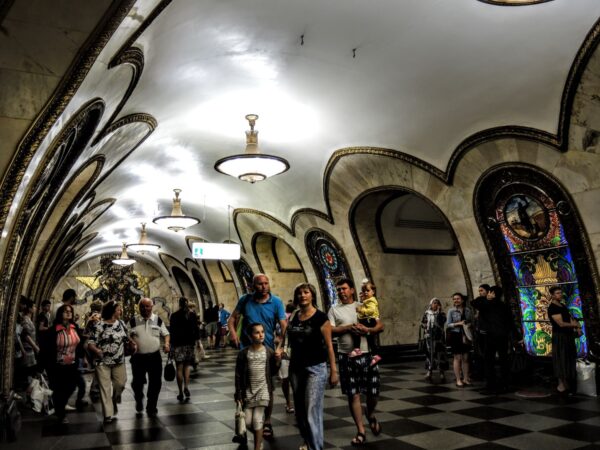
And if you follow this link, you can see the rest of the pictures I took.
I need to write a few words about Moscow’s Metro system. First, like London’s many of the stations are deep underground – possibly to double as bomb shelters and it’s not unusual to encounter long escalators. At the foot of these, there’s a small, staffed booth where the person inside is (usually casually) watching a closed-circuit monitor of the escalator. Beyond having a job, I can barely imagine what her real purpose is. Most of the time, a woman is working in this position.
It’s a large system with 188 stations and 313 kilometers of track length. For comparison, Washington’s Metrorail has 86 stations and 171 kilometers of track (excluding the ongoing Silver Line expansion). Moscow’s system is the seventh largest in the world by length and ninth in number of stations. The cost is a minimal 30 rubles (about $1.00) per trip. During the day, the trains are always crowded and run with breathtaking frequency. I can’t recall ever waiting longer than two and a half minutes for a train.
I have one other generalized observation more to do with the riders than the system. There is a real generational split with older riders tending to read actual printed books and newspapers while the younger people passed the ride on their cell phones, MP3 players, or e-readers.
After surreptitiously taking photos in a handful of stations (with some of us being considerably more discreet than others) G took us to Arbat Street probably the largest and best-known pedestrian only street in Moscow. This street is so well known, in fact that some locals in Yekaterinburg refer to Vainera Street as “Ural Arbat”. We stopped for lunch at a place called Му-Му (which in Russian is pronounced “moo-moo”). Remember this when you look at the pictures in the Moscow folder. I’ll leave it to you to guess which to associate with this particular lunch.
We went our separate ways after lunch pursuing our varied interests singly or in pairs. Erin and I chose to visit Novodevichy Cemetery where you can find gravesites for many famous Russians or, in some cases such as Tolstoy, some of their lesser-known relatives. The cemetery is adjacent to the Novodevichy Convent which G told us to ask for if we got lost because people would not recognize what we were asking about if we asked about the cemetery. Erin and I got back on the Metro and upon our exit immediately saw a sign pointing in the direction of the convent. Aha! We thought. This is going to be easy. And, indeed, it would have been had we turned left on our approach to the convent rather than right. The right turn made finding the graveyard a bit of an adventure. We wandered through an adjacent park with a small pond making two wrong turns. One led to this view of the convent:
And one led us to this:
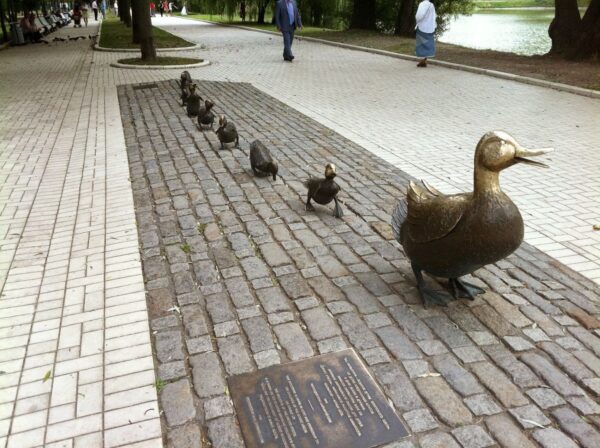
Erin patted each one, “Duck, duck, duck…” I successfully dodged the initial goose tag but failed to be prepared for the dreaded delayed goose. So goosed I was and goosed I remain. After another false hope or two, and after making what amounted to a complete circuit of the convent and cemetery, we found the entrance at last. However, the guide to the cemetery is, naturally, in Cyrillic, so we had to rely on my ability to read and translate that to be able to see the dead people I wanted to see. At this point, Erin’s Magellan kicked in and she guided me around the cemetery without once having to say, “Make a u-turn if possible.” Here are photos of many of the gravesites we visited.
Afterward I learned, much to my chagrin, that two Sergeis, Eisenstein and Prokofiev, whose graves I would have liked to have seen but didn’t, are also buried there. But the day was otherwise so pleasant that I decided to chagrin and bear it.
The Metro ride back to the hotel also proved to be a bit of an adventure. It’s fairly common that stations of different names are connected for transfers from one line to another by a series of escalators and passageways. If you can read the Cyrillic and follow the signs, then fine. Otherwise, you’re liable to make the mistake we did and cost yourself an unnecessary fare by exiting to the street from one station and then entering the other. But it was out first day! We were still learning our way around. Then as we stood on the train riding back, I guess I looked particularly old and tired because a man tapped my hip and offered me his seat a stop or two before he got off. Still, despite our minor missteps, we made it back to the hotel, retrieved our bags from storage and trundled off to our rooms for a pre-dinner shower.
Now, about the hotel. As I noted above, it’s part of the complex that served as the Olympic Village for the 1980 Games. The complex itself is comprised of five 28-story buildings and out hotel has the charming moniker Ismailovo Gamma Delta. We’re in the Gamma building.
To access your room from the lobby, you use one of two banks of reasonably normal sized elevators depending on the floor. However, to get to the elevators, you have to pass a guard to whom you show a card with your name, room number, arrival, and departure dates.
After its ascent, he elevator leaves you in a central lobby with a hallway on each side that needs your room key card access to go to your side of the hotel. (There were two common rooms that connected the two sides that were not secure.) This was, to my recollection, the first hotel on the entire trip not to use compact fluorescent bulbs in the room fixtures. The room temperature sat squarely on 30° with no way to adjust it beyond either opening the window in defiance of the note from management requesting that we not leave the window open or by turning on the tiny fan sitting next to the tiny television that looked as though it was the same television that had been in the room during the 1980 Olympics.
To end the day, E, R, G & I went to a kebab shop near the hotel. The kebab, not to be confused with a kebob, was shaved, halal chicken with peppers and onions and a creamy, drippy sauce wrapped in grilled cheese bread. Much to Rose and Erin’s delight, I managed a nice drippy stain on my fancy travel vest. Still, for 120 rubles it was by far the best, most filling meal I could imagine. And with that, I was off to bed.
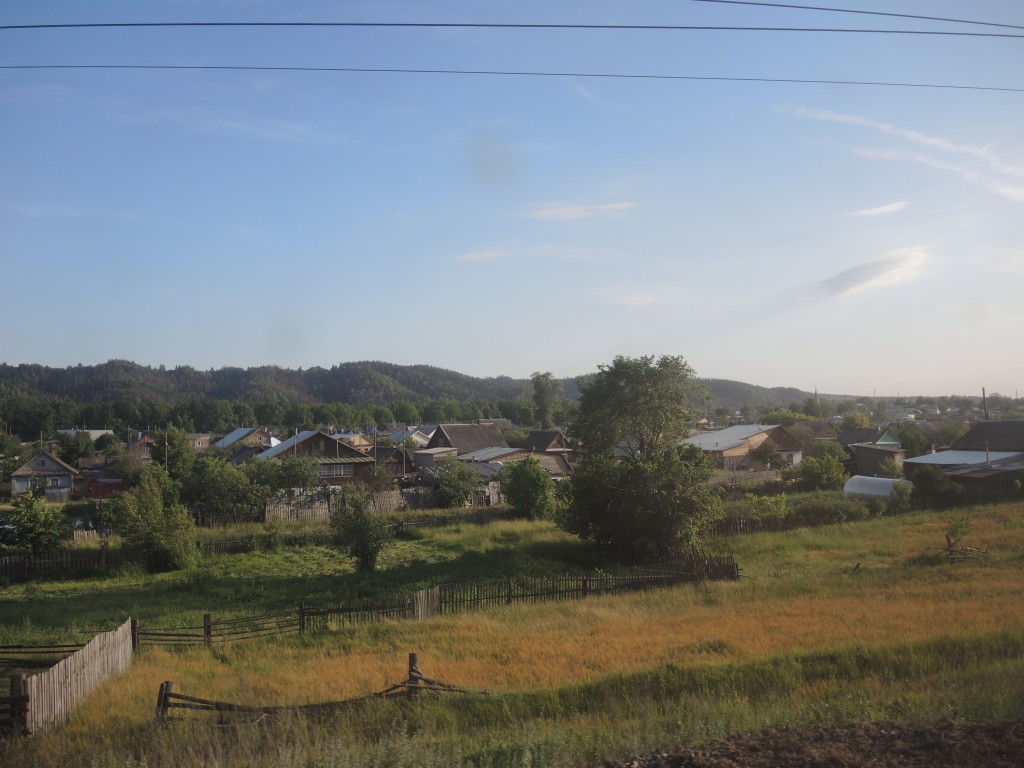
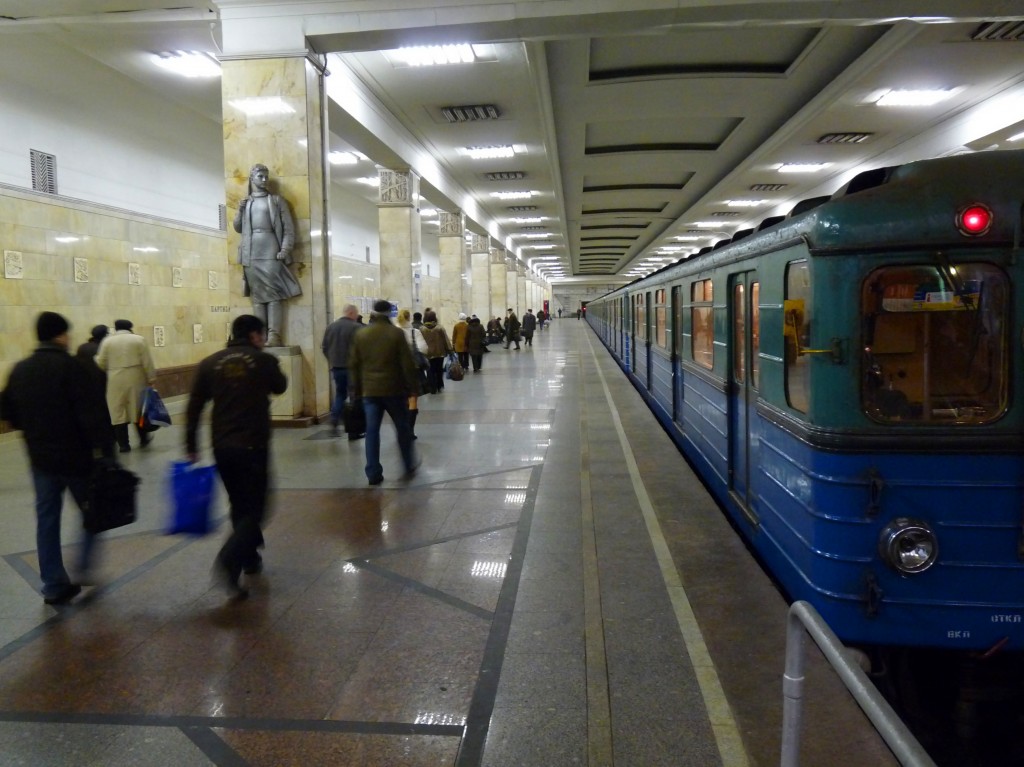
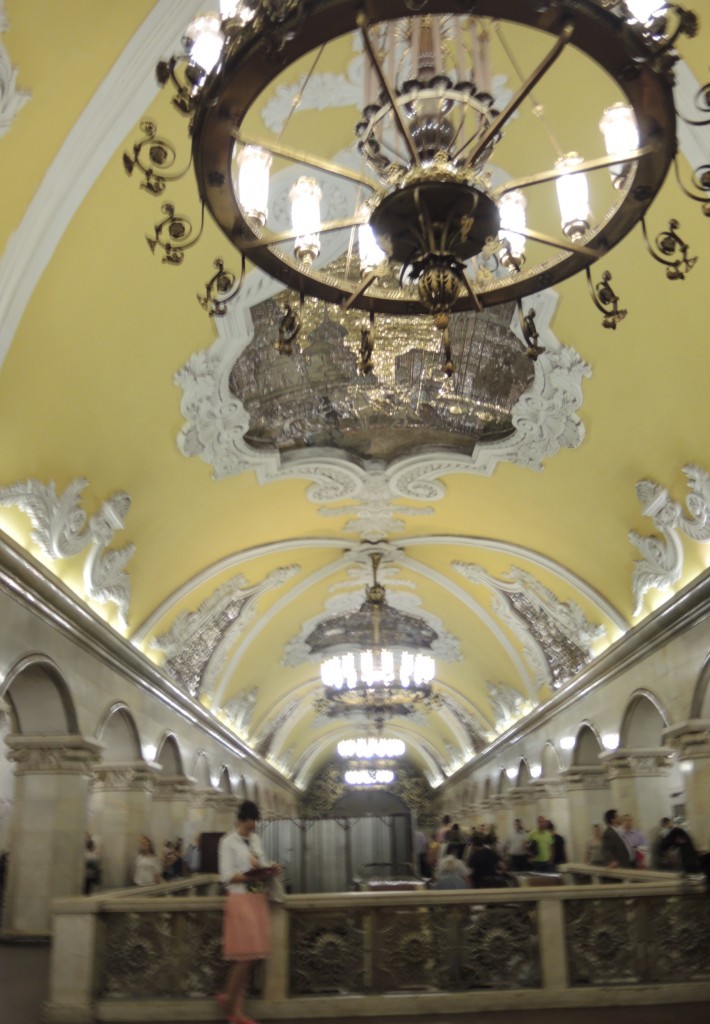
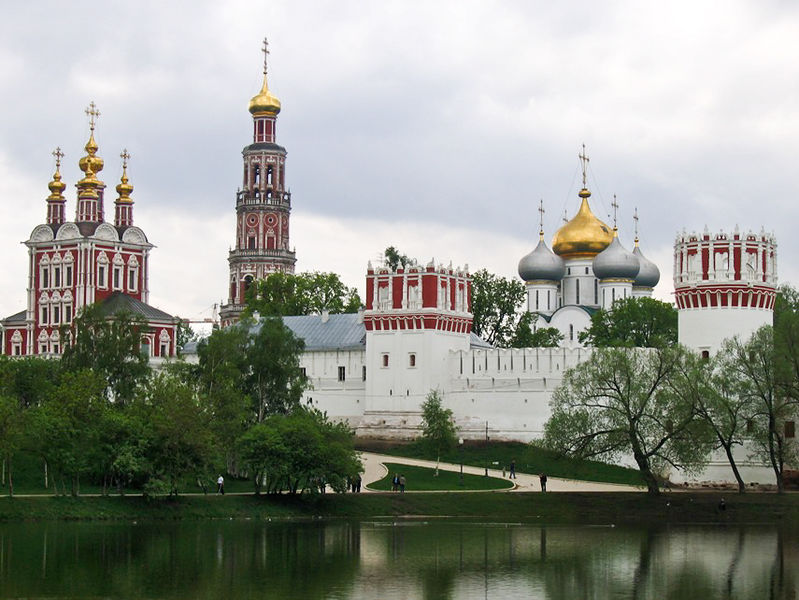

Ah – love the photos of the subway stations. Amazing what can be done with purloined objects from churches, etc. Maybe Stalin was ahead of his time regarding recycle, reuse, repurpose? Really enjoyed the pics of the grave sites. Really liked the one for Shostakovich – so lovely.
Just couldn’t resist the pun, eh? Have to say it is a good one.
How long will you remain goosed?
No, could not resist the pun and I think only Erin can undo the goose.
Wow…what a beautiful metro station (looks just like our stations here in DC/MD)!!!
So glad you risked your life taking these pictures for those of us who will never make it to Moscow.
not necessarily my life but my FreeDOM!
Hey There. I found your blog using msn. This is a really well written article. Thanks for the post. I’ll certainly return.